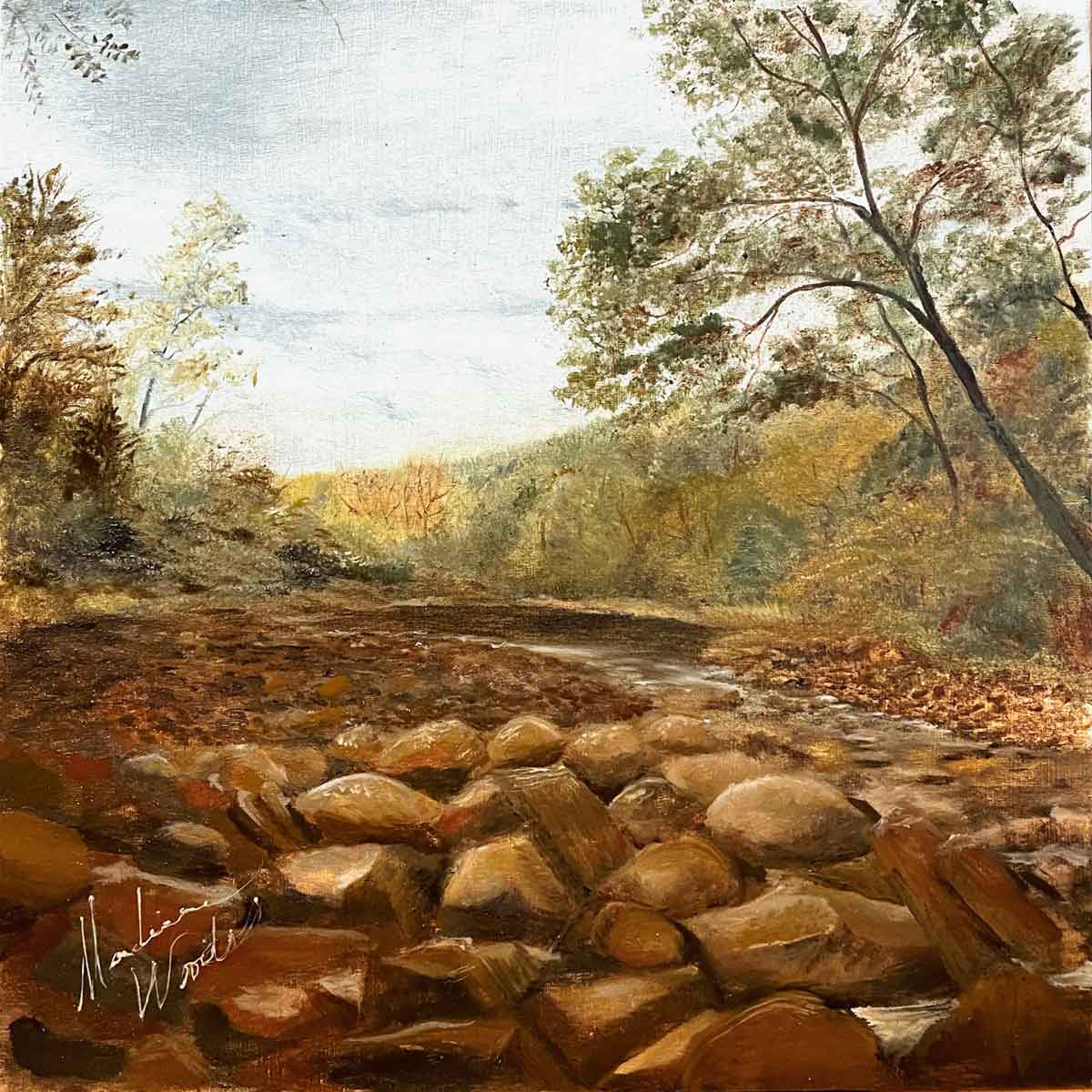The beautiful Felkins creek is located in Madison county AR. These rocky shores supply me with many of the rocks I use to make my paints. This photo is one of the favorites I’ve ever captured at a particular spot that always draws my eye. I’m going to attempt to capture it in a painting.

The Luminance
I don’t know yet how to portray the luminance you see in this photo. It’s hard to capture even with a camera, unless there’s backlighting. So, if ever I learn how to do it with the pigments I’ve foraged, I’ll come back to this and try it again. If there’s any one technique that will drive me to take a class, this would be it. I really want to know how to do that. In the meantime, I’ll study great artists who share their techniques online.
The Felkins Creek Focus
The rocky foreground is the focal point. Felkins creek is very rocky, and I’ve yet to do a good job painting the rocks into a scene. This will be good practice.
Progress So Far







A study
This small one is a study for a larger one I want to do next. I think it would be a nice scene for a 24 x 36″ painting, or at least a 16 x 20″.
A Little About My Paint-making Process
Since my paints are handmade and (mostly) locally foraged, I have to make sure I have the colors I need before I begin a project. If it’s a plant pigment, then I’ll need to harvest the plant and process it to make the pigment. The only plant sources I use at this time are thyme, and the root bark of Osage trees. The rest comes from foraged rocks, soot, bone, or purchased lapis and titanium dioxide powder.
Here’s a blog post I made earlier about making oil paints:
So, if it’s a rock, then I’ll break it to smaller pieces, then crush it as finely as I can. The crushed rock is the raw pigment. After that I put the powder into a jar and fill the jar with water. Depending on the source rock, I’ll either pour off the colored water into another jar to let it settle, or pour the rinse water out and keep the sediment for the paint. After the water clarifies and the pigment has settled, then I pour off the clear water and let the sediment dry. That is what I’ll make the paint from.
When it comes to plants, there’s more chemistry involved. I’ll make what is called a ‘lake’ pigment. Here’s a post that gives more information on that process.
I hope you love this earthy palette of color as much as I do! Thanks for reading ~ Madison
ABOUT
________________________________
Madison Woods is the pen-name for my creative works. I’m a self-taught artist who moved to the Ozarks from south Louisiana in 2005. My paintings of Ozark-inspired scenes feature lightfast pigments from Madison county, Arkansas. My inspiration is nature – the beauty, and the inherent cycle of life and death, destruction, regeneration, and transformation.
Roxann Riedel is my real name. I’m also salesperson for Montgomery Whiteley Realty. If you’re interested in buying or selling in Madison or Carroll county, AR, let me know! You can see the properties that I blog about at WildOzarkLand.com.
Wild Ozark is also the only licensed ginseng nursery in Arkansas. Here’s the link for more information on the nursery
P.S.
There’s always a discount for paintings on the easel 😉
Here’s my Online Portfolio
And, Click here to join my mailing list.
Contact Mad Rox: (479) 409-3429 or madison@madisonwoods and let me know which hat I need to put on 🙂 Madison for art, Roxann for real estate, lol. Or call me Mad Rox and have them both covered!
https://www.youtube.com/@wildozark


